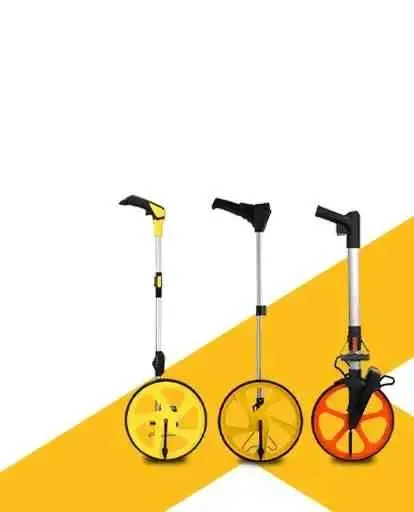
-
 Afrikaans
Afrikaans -
 Albanian
Albanian -
 Amharic
Amharic -
 Arabic
Arabic -
 Armenian
Armenian -
 Azerbaijani
Azerbaijani -
 Basque
Basque -
 Belarusian
Belarusian -
 Bengali
Bengali -
 Bosnian
Bosnian -
 Bulgarian
Bulgarian -
 Catalan
Catalan -
 Cebuano
Cebuano -
 Corsican
Corsican -
 Croatian
Croatian -
 Czech
Czech -
 Danish
Danish -
 Dutch
Dutch -
 English
English -
 Esperanto
Esperanto -
 Estonian
Estonian -
 Finnish
Finnish -
 French
French -
 Frisian
Frisian -
 Galician
Galician -
 Georgian
Georgian -
 German
German -
 Greek
Greek -
 Gujarati
Gujarati -
 Haitian Creole
Haitian Creole -
 hausa
hausa -
 hawaiian
hawaiian -
 Hebrew
Hebrew -
 Hindi
Hindi -
 Miao
Miao -
 Hungarian
Hungarian -
 Icelandic
Icelandic -
 igbo
igbo -
 Indonesian
Indonesian -
 irish
irish -
 Italian
Italian -
 Japanese
Japanese -
 Javanese
Javanese -
 Kannada
Kannada -
 kazakh
kazakh -
 Khmer
Khmer -
 Rwandese
Rwandese -
 Korean
Korean -
 Kurdish
Kurdish -
 Kyrgyz
Kyrgyz -
 Lao
Lao -
 Latin
Latin -
 Latvian
Latvian -
 Lithuanian
Lithuanian -
 Luxembourgish
Luxembourgish -
 Macedonian
Macedonian -
 Malgashi
Malgashi -
 Malay
Malay -
 Malayalam
Malayalam -
 Maltese
Maltese -
 Maori
Maori -
 Marathi
Marathi -
 Mongolian
Mongolian -
 Myanmar
Myanmar -
 Nepali
Nepali -
 Norwegian
Norwegian -
 Norwegian
Norwegian -
 Occitan
Occitan -
 Pashto
Pashto -
 Persian
Persian -
 Polish
Polish -
 Portuguese
Portuguese -
 Punjabi
Punjabi -
 Romanian
Romanian -
 Russian
Russian -
 Samoan
Samoan -
 Scottish Gaelic
Scottish Gaelic -
 Serbian
Serbian -
 Sesotho
Sesotho -
 Shona
Shona -
 Sindhi
Sindhi -
 Sinhala
Sinhala -
 Slovak
Slovak -
 Slovenian
Slovenian -
 Somali
Somali -
 Spanish
Spanish -
 Sundanese
Sundanese -
 Swahili
Swahili -
 Swedish
Swedish -
 Tagalog
Tagalog -
 Tajik
Tajik -
 Tamil
Tamil -
 Tatar
Tatar -
 Telugu
Telugu -
 Thai
Thai -
 Turkish
Turkish -
 Turkmen
Turkmen -
 Ukrainian
Ukrainian -
 Urdu
Urdu -
 Uighur
Uighur -
 Uzbek
Uzbek -
 Vietnamese
Vietnamese -
 Welsh
Welsh -
 Bantu
Bantu -
 Yiddish
Yiddish -
 Yoruba
Yoruba -
 Zulu
Zulu


Aug . 16, 2024 09:42 Back to list
Essential Tools for Working with Steel Cables and Enhancing Durability
Essential Steel Cable Tools for Various Applications
Steel cables are indispensable in a variety of applications, ranging from construction and manufacturing to entertainment and transportation industries. Whether it’s for lifting, pulling, or securing loads, the strength and durability of steel cables make them a preferred choice over other materials. However, the efficiency of steel cables greatly depends on the tools used for their installation, maintenance, and management. In this article, we will explore some essential tools associated with steel cables, discussing their functions and significance in various applications.
1. Cable Cutters
One of the fundamental tools needed for working with steel cables is a reliable cable cutter. These specialized tools are designed to cut through steel cables cleanly, allowing for precise lengths without fraying or damaging the cable strands. Various types of cable cutters are available, including manual and hydraulic versions. Hydraulic cable cutters are particularly useful for thicker cables, as they require less physical effort and ensure a clean cut, which is crucial in maintaining the integrity of the cable.
After cutting steel cables, crimping the ends is often necessary to create loops or to attach fittings. Cable crimping tools apply pressure to metal fittings to securely fasten them to the cable ends. This process is vital for maintaining the strength and reliability of the cable assembly. There are different types of crimping tools available, ranging from handheld manual tools for smaller cables to large hydraulic crimpers for heavy-duty applications. The right choice depends on the specific requirements of the job and the size of the cables being handled.
3. Cable Tensioners
steel cable tools

In applications where steel cables are used for lifting or supporting structures, proper tensioning is crucial to prevent sagging or accidents. Cable tensioners help regulate and maintain the appropriate strain on the cables. These devices can be mechanical or hydraulic, enabling the user to adjust the tension accurately. Properly tensioned cables ensure safety and optimal performance, whether it's in construction sites, rigging, or other industrial applications.
4. Cable Spools and Reels
Managing steel cables can be challenging, especially when dealing with long lengths that may tangle or get damaged. Cable spools and reels are essential tools for storage, organization, and transportation. These devices help keep cables neatly coiled, preventing kinks and damage during transport or storage. Some spools are designed for portability, making them ideal for job sites where mobility is essential.
5. Winches and Hoists
Winches and hoists are necessary tools for lifting heavy loads using steel cables. Winches provide the mechanical advantage needed to haul large weights over considerable distances, while hoists are used for vertical lifting. Both tools can be powered manually, electrically, or hydraulically, depending on the application and weight requirements. Ensuring that the correct type and capacity of winch or hoist is used is imperative for safety and efficiency in lifting operations.
Conclusion
In summary, tools specifically designed for working with steel cables are crucial for ensuring safety, efficiency, and effectiveness in various applications. From cable cutters and crimpers to tensioners and lifting devices, each tool plays a vital role in handling steel cables properly. Understanding the importance of these tools and selecting the right ones for specific tasks can significantly enhance productivity and safety in both industrial and commercial settings. As the demand for steel cable applications continues to grow, the innovation and development of these tools will remain a critical focus in the industry. Whether in construction, entertainment, or transportation, the right steel cable tools will continue to empower professionals to achieve their goals efficiently and safely.
Latest news
The Unique Design of Cable Socks
NewsJun.04,2025
Swivel Connectors in Industrial Automation
NewsJun.04,2025
Safety Features of Link Sticks
NewsJun.04,2025
How to choose the best cable pulling winch for sale
NewsJun.04,2025
Fish tape safety precautions
NewsJun.04,2025
Essential Maintenance Tips for Cable Pulling Tools
NewsJun.04,2025











